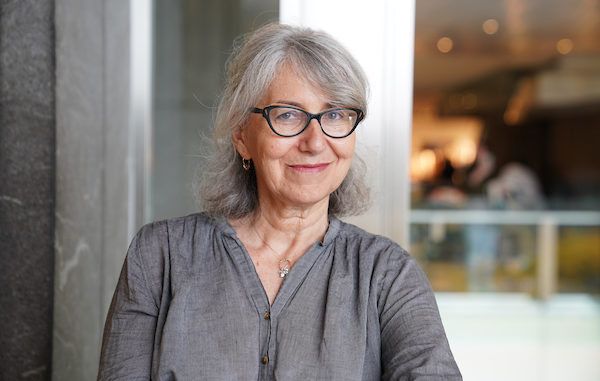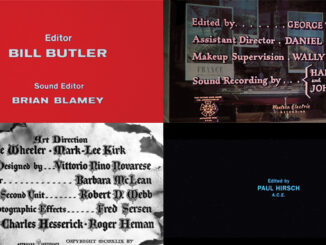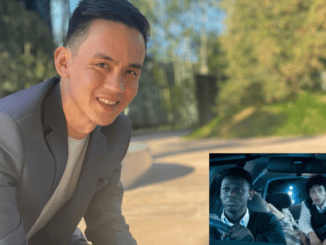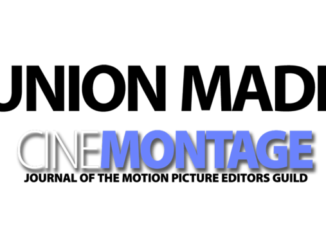
by Patrick Z. McGavin
Carole Kravetz Aykanian trained as a dancer in her native France.
“There’s no question that background helped me in my career, with the sense of rhythm and movement,” she said. “When I sit in a chair, that sense of form and rhythm is in my head.”
Arriving in Los Angeles in the 1980s, she studied directing at the American Film Institute, where she befriended the actor-turned-filmmaker Carl Franklin. She cut his groundbreaking feature “One False Move” (1992), marking the beginning of a signficant and versatile career as a picture editor in features, television, and cable series.
Her newest project is “The Morning Show,” the ambitious backstage drama starring Jennifer Aniston, Reese Witherspoon and Steve Carell about fame, power and professional disgrace at a Manhattan-set television show. It is one of the first offerings of the Apple+ streaming platform, the computer giant’s big expensive bid in the streaming wars.
CineMontage: Mimi Leder directed the first two episodes you cut. What was the creative dynamic like between you?
Aykanian: It was interesting because it was the first time I worked with Mimi. You have to build the trust. That is the most important quality to create.
The pilot was the foundation. We had to find the tone. It’s an interesting tone in how it blends comedy and drama. It’s a pretty dramatic story, but we had to find the comedy through it, because we have these amazing actors who are so versatile.
The show moves between some very funny, revealing material but also some darker-edged ideas. What is the hardest part about capturing and heightening the comic parts of the show?
It’s a very complicated subject. When you have Steve Carell playing the character of the disgraced anchor Mitch, he naturally brings comedy and the human side to the character. He is not this really bad guy. He is also a human being, and that’s what he brought in his performance. It was never black-and-white. We were looking for the gray, the in-between. You also have the parallel characters of the anchor played by Jennifer Aniston and the upstart played by Reese Witherspoon.
Was there a way in the editing you want to link them visually?
There is a lot of parallel cutting. There is a moment in the pilot, it was not scripted that way, where Bradley Jackson (Witherspoon) arrives in New York to be interviewed on the show, she gets into the hotel room and she starts to study Alex (Aniston). On the other side is Alex, who is drinking and does not know to do with herself because of what happened to Mitch (Carell) and the scandal, we created this parallel moment that leads into Alex going to work early.
We created this montage sequence that was never really planned but I think is quite effective because we know they are going to meet, but we don’t know how or when.
The big moment of the first episode is the on-air interview between the two lead women.
We know there are going to be a lot of scenes at the studio, they are going to be live, on TV and on the floor, and we have to figure out how to use all of that footage. You don’t want to be making too many cuts. You don’t want to try to show everyone reacting to everything being said. It’s just not possible.
The tension is escalating because Alex is driving the conversation in a direction that was not planned. You have to pay attention by showing how people are reacting to what she is saying, but at the same time you have to keep giving the feeling that it’s not just acting in a studio, this is live television with millions of people watching. You have people listening and reacting and we tried and tried and tried until we found the shape that we liked.
You have had a very eclectic background. You have done series, feature animation and some extraordinary work in your collaborations with
Carl Franklin. How would you say the different forms and styles you have worked in prepared you for “The Morning Show”?
I have worked with so many different people. The feature work I have done with some really great directors prepared me to push for greatness. In features, you are given the time to explore. You push until everybody is satisfied. What happens in series is, you don’t have as much time.
Mimi has also worked on features, and we had to do the treatment, and worked on it as though it were a feature. That’s why this show is complicated. Everybody is so ambitious in the standards we set up. They were very high and we wanted to explore every scene or structure in the same way you would on a feature. That is a big challenge in television because the time does not allow you to do that. We did.
Definitely the storytelling approach is as if each episode is a small feature. We treated each episode that way, giving it the most attention and as much love as we could. We had Jen and Reese, who are the lead actors and also the producers. I cherish that. Some might be intimidated by that. I like it. I like ideas, and the more you push me and challenge me the more I will respond as an editor. It makes me think and it is exciting coming up with different ways of solving things or even coming up with music or telling a story. We took the time to let things unfold without feeling the need to rush.
The show is one of the signature works of the new streaming service of Apple. Does this feel like a new frontier to you in a way? How excited are you by these new platforms and forms of expression to get into the marketplace?
What’s happening in television today is incredibly exciting. It’s a little scary. You wonder how much people want to watch. I never thought I would see this. I have been in this business for a long time. I cut my first feature on 35mm. I have been around. I think it’s incredibly exciting. I am not afraid of it.
There’s nothing like watching a film on a big screen with a crowd. That’s my favorite thing to do. Things have changed, and so many people are now able to make series and films. We can’t be afraid of that. We have to be open. Things change all the time. Movies are changing. I don’t want the movie theater to disappear. I welcome every other way.
It’s pretty extraordinary and such good work has come out. People are able to work, write, and create — and it is exciting. ■
Patrick Z. McGavin is a Chicago-based film critic and cultural journalist.
A version of this article appeared in the Q4 2019 print edition of CineMontage.





